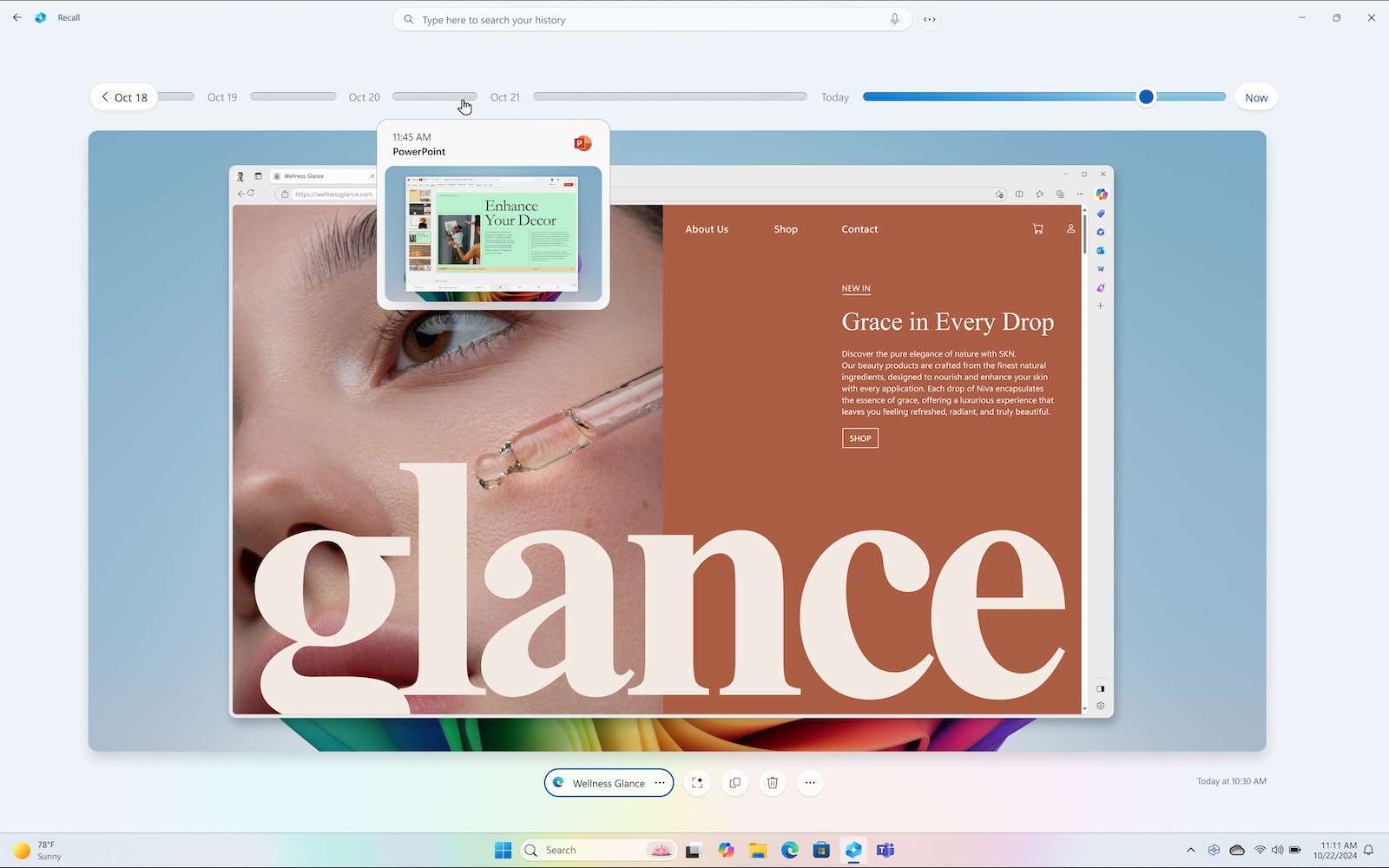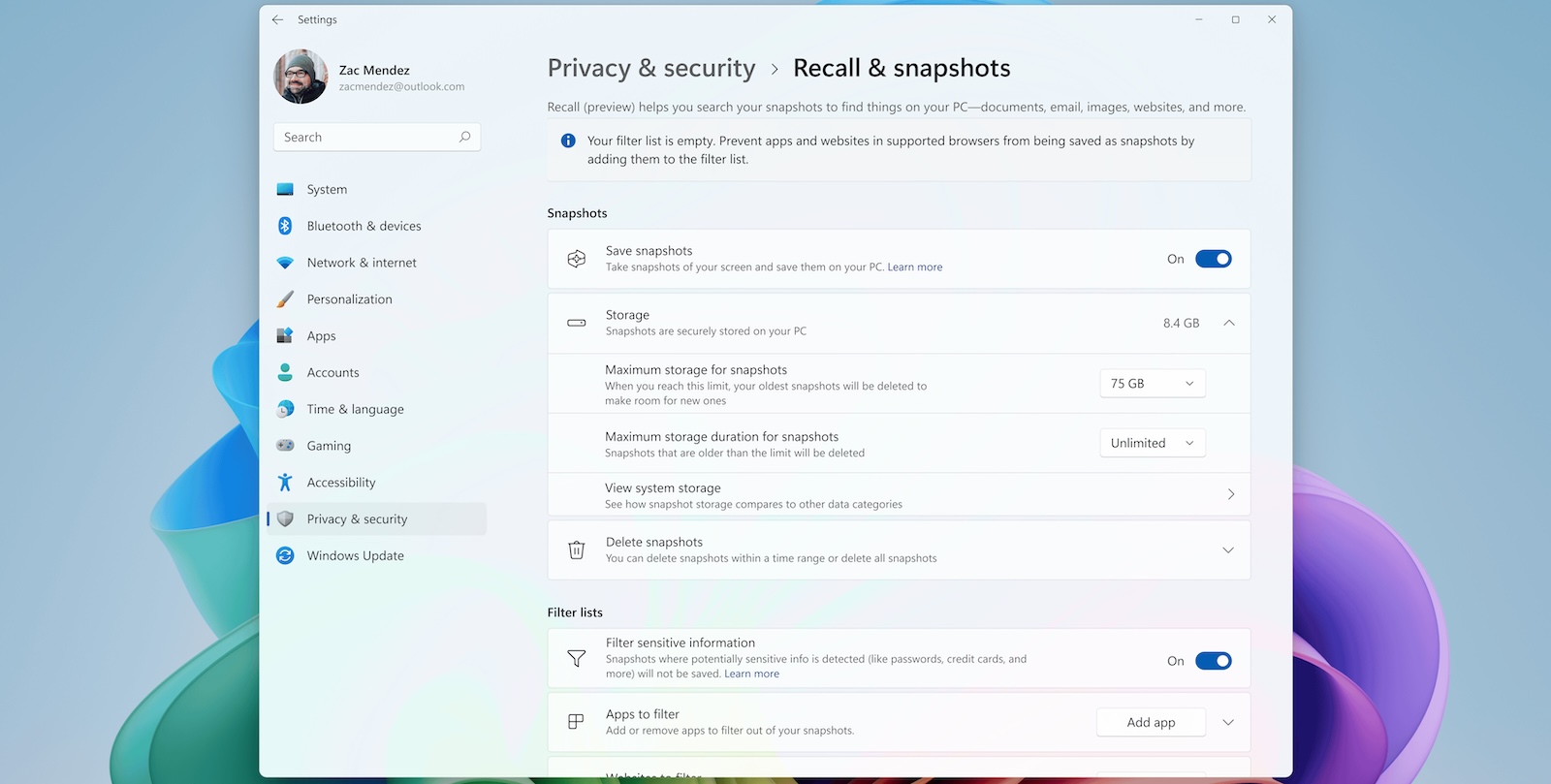

Microsoft announced today that its controversial AI-powered Recall feature is finally rolling out to Windows Insiders in the Dev Channel using Snapdragon-powered Copilot+ PCs.
Today’s announcement follows two other delays in June and last month, as well as the company’s hurried statement in August that Recall would be available for insiders starting in October.
Microsoft now says Windows Insiders can try the first preview of Recall on Snapdragon Copilot+ PCs after joining the Dev Channel and installing the Windows 11 Preview Build 26120.2415 (KB5046723). Support for AMD and Intel-powered Copilot+ PCs will also be added soon.
“When you open Recall, you can complete the first-run experience, which will ask you to opt-in to saving snapshots. It will also require you to enroll in Windows Hello to confirm your presence,” the Windows Insider team said today.
“This requires you to enable Bitlocker and Secure Boot if you haven’t already. If you don’t enable saving snapshots, Recall will not save any snapshots of your activity.”
As the company explained when Recall was unveiled in May, this Windows feature takes screenshots of active windows every few seconds, analyzes them using the system’s Neural Processing Unit (NPU) and an on-device AI model, and stores all collected data in an SQLite database.
Windows 11 users can later use Recall to retrieve relevant screenshots by searching for information in the screen snapshots using natural language.

After Recall was revealed, cybersecurity experts and privacy advocates warned that it would be a privacy and security nightmare since attackers would most likely also abuse it to steal Windows users’ data.
In response to widespread negative feedback, Redmond made it an opt-in feature that requires the user to confirm they’re in front of the PC via Windows Hello to be able to use it.
Microsoft also said that Recall can be removed, will automatically filter sensitive content like credit card details, passwords, and personal identification numbers, and allows users to exclude specific apps, websites, or in-private browsing sessions,
According to Microsoft’s VP for Enterprise and OS Security, David Weston, Recall has malware protection features such as anti-hammering and rate-limiting measures. The company also shared today that Recall allows users to select apps and websites to ignore when searching the snapshot database.
From Recall’s settings page, you can also change storage settings, disable saving snapshots, delete snapshots, and choose which apps and websites should be filtered from being saved.

Redmond also announced at this year’s Ignite conference that Recall will be removed by default from enterprise devices, with IT admins having the choice to enable it for employees to opt in.
“We do not send your snapshots off your PC to Microsoft or third parties, and don’t use them for training purposes. Microsoft can’t access the keys to view your encrypted data, so we can’t restore your snapshots if you remove Windows Hello or restore your snapshots if you need to reset your PC or move to a new PC,” the Windows Insider team added today.
“We will in future updates provide ways for you to store a backup of your keys for these cases. For now, your Copilot + PC only releases the keys to use Recall if you show your face, fingerprint, or PIN.”
Starting today, Microsoft is also rolling out the Click to Do (Preview) feature to Windows Insiders, “which offers AI powered actions you can take on these, saving you time by helping complete tasks inline, and/or quickly getting you to the app that can best complete the job for you.”
For now, it only works within the Recall experience. Click to Do works locally, analyzing the screen’s contents from screenshots and, just like Recall, it’s an opt-in feature that can be disabled.